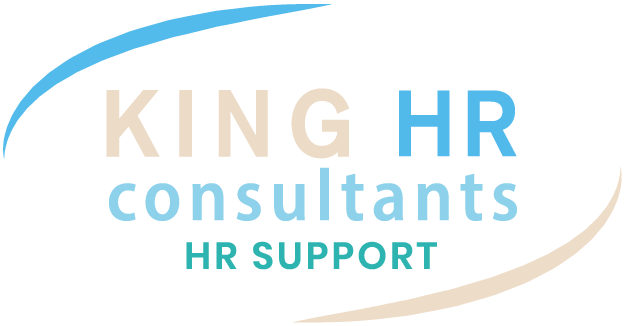How Employment Law Knowledge Safeguards HR Professionals and Businesses in Australia – A Case Study
A HR professionals $7,600 penalty offers a valuable lesson in professional protection. This case study shows how comprehensive Australian employment law knowledge acts as a powerful shield, transforming legal complexity from a potential threat into a source of professional confidence and security for business leaders and HR professionals alike. While HR professionals are naturally guided by their employers to manage employee matters using established HR practices, Australia’s unique employment law landscape demands a fundamentally different approach. Much of today’s HR training originates from overseas institutions and is adapted for Australian workplaces without fully incorporating our distinctive legal framework. This creates a critical gap where standard HR practices may not align with Australian employment law requirements. The key shift required here is for HR professionals to evaluate their actions first through the lens of following Australian employment law, then advise their employers on the best legal approach rather than a generalist HR approach. This legal-first mindset transforms HR professionals into knowledgeable guides who help their employers navigate the complex Australian employment law landscape, providing invaluable protection for both them and their organisations
The Background
An HR manager at an Australian company became involved in workplace actions against an employee who had previously exercised workplace rights. The specific details involve complex workplace dynamics, but the legal issues that emerged provide clear lessons about how employment law operates differently from traditional HR management. The HR manager was not acting maliciously or incompetently. They were making decisions based on their HR training and experience. However, those decisions intersected with the Fair Work Act’s adverse action provisions in ways that created serious legal consequences.
Understanding Adverse Action Law
Before examining what went wrong, it’s important to understand why adverse action law exists and how it operates.
The Purpose:
Adverse action provisions protect employees’ workplace rights by making it unlawful to act against someone because they have exercised those rights. This includes rights like:
- Making complaints about workplace issues
- Participating in industrial action
- Exercising entitlements under workplace laws
- Participating in workplace investigations
The Legal Framework:
The Fair Work Act creates a complex framework around adverse action that includes:
- Broad definitions of what constitutes “adverse action”
- Multiple categories of protected workplace rights
- Reverse onus provisions that shift the burden of proof
- Individual liability provisions that can make employees personally responsible
What the HR Manager Didn’t Understand
The case reveals several critical gaps in understanding that contributed to the legal liability:
-
- Individual vs Corporate Liability. Many HR professionals understand that companies can face penalties for employment law breaches. Fewer understand that individuals can face personal liability for their role in those breaches.
The Fair Work Act’s accessorial liability provisions make individuals liable if they:
- Aid, abet, counsel, or procure a contravention
- Engage in a contravention
- Conspire with others to contravene the law
This means HR professionals can be personally fined for actions taken in their professional capacity.
2. The Reverse Onus Principle. In most legal situations, the person making an accusation must prove their case. Adverse action law operates differently.
Under reverse onus provisions, once someone establishes that:
- They exercised a workplace right, AND
- Adverse action was taken against them
The burden shifts to the employer (and potentially individual employees) to prove the adverse action was NOT taken because of the workplace right. This is a fundamental shift that many HR professionals don’t understand. It means the question becomes: “Can you prove your actions weren’t influenced by their complaint?” rather than “Can they prove your actions were influenced by their complaint?”
3. The Complexity of Causation. Adverse action law doesn’t require that workplace rights be the only reason for action. It’s unlawful if exercising workplace rights was a reason, even if there were other legitimate reasons for the action.
This creates complexity in situations where:
- An employee makes a complaint AND has performance issues
- Someone exercises workplace rights AND later faces restructuring
- A worker participates in industrial action AND subsequently has misconduct issues
HR professionals often think in terms of “primary reasons” for actions. Employment law considers “any contributing reasons.”
4. The Scope of “Adverse Action”. The definition of adverse action is broader than many HR professionals realise. It can include:
- Dismissal or demotion • Changes to position or duties
- Discrimination in treatment
- Alteration of work arrangements
- Harassment or intimidation
Actions that seem like routine HR management can constitute adverse action if they negatively impact an employee who has exercised workplace rights.
How HR Thinking Differs from Legal Analysis
This case illustrates fundamental differences between HR and legal approaches to workplace situations:
HR Approach:
- Focus on workplace harmony and practical outcomes
- Consider the immediate management needs and employee relationships
- Evaluate actions based on business objectives and people management principles
- Assume good intentions and professional judgment provide protection
Legal Approach:
- Focus on statutory compliance and evidentiary requirements
- Consider potential legal consequences and liability exposure
- Evaluate actions based on legislative requirements and case law precedents
- Recognise that good intentions don’t prevent legal liability
The Decision-Making Process
The HR manager followed a reasonable decision-making process from an HR perspective:
- Identified workplace issues requiring management attention
- Considered the business needs and practical solutions
- Made decisions based on HR best practices and experience
- Implemented actions with professional intentions
But, a legal analysis would have included additional considerations:
- Had the employee recently exercised workplace rights?
- Could the proposed actions be perceived as adverse action?
- What evidence exists to demonstrate legitimate business reasons?
- How can the reverse onus requirements be satisfied?
- What is the individual liability exposure for key decision-makers?
The Preventive Approach
This case doesn’t suggest HR professionals should become lawyers. Instead, it highlights the importance of recognising when HR decisions intersect with legal complexity.
Red Flag Indicators:
Situations requiring legal consideration include:
- Actions involving employees who have recently made complaints
- Decisions affecting workers who have participated in industrial action
- Changes to arrangements for people who have raised workplace issues
- Any situation where timing might suggest a connection to workplace rights
Risk Mitigation Strategies:
- Document legitimate business reasons for all significant HR decisions
- Ensure decision-making processes can demonstrate objective business justification
- Seek legal advice when actions might appear connected to workplace rights
- Understand the reverse onus implications for evidence and documentation
The Broader Implications
This $7,600 fine represents more than a financial penalty. It demonstrates:
For HR Professionals:
- Personal liability is real and can result in significant financial consequences
- Professional indemnity insurance may not cover all situations
- Career reputation can be impacted by legal findings
- Understanding legal boundaries is essential for senior HR roles
For Organisations:
- HR decisions can create liability for both the company and individual employees
- Investment in legal training for HR teams can prevent costly mistakes
- Clear processes for identifying legally complex situations are essential
- Collaboration between HR and legal expertise is crucial for risk management
For the Industry:
- Traditional HR training may not adequately address legal complexity
- Professional development needs to include practical legal education
- The regulatory environment continues to create new compliance challenges
- Industry standards may need to evolve to address legal requirements
Moving Forward
This case study illustrates why understanding the distinction between HR management and employment law compliance is so important. The HR manager was not incompetent or malicious. They were operating within their professional expertise but encountered legal complexity that required different knowledge and analysis. The solution is not expecting HR professionals to become lawyers but recognising when workplace decisions require legal input and ensuring that input is available and used effectively. For HR professionals, this case demonstrates the importance of:
- Understanding personal liability risks in employment law
- Recognising situations that require legal advice
- Building collaborative relationships with employment law specialists
- Investing in ongoing education about legal developments
For organisations, it highlights the value of:
- Clear processes for identifying legally complex situations
- Ready access to employment law expertise
- Investment in legal education for HR teams
- Risk management frameworks that consider individual liability
The employment law landscape will continue to evolve and create new compliance challenges. The most successful HR professionals and organisations will be those that understand these challenges and build appropriate capability to address them.
This $7,600 fine serves as an expensive reminder that good intentions and professional competence in HR management don’t automatically provide protection against employment law liability. And it’s not the only one – HR professionals across Australia are facing similar penalties, from $18,496 restaurant manager fines to $21,760 penalties for payroll violations. The pattern is clear: personal liability for HR professionals is becoming the norm, not the exception.
Understanding this distinction, and acting on it, is essential for both professional success and avoiding legal pitfalls that cost both you and your business time and money. That’s exactly why I developed the Learn Australian Employment Law Course – to bridge this critical knowledge gap. If you have employees in Australia, you need to know the law. Join the waitlist today, course opens in September. Link in the comments below along with the case this story relates to.
How does your organisation handle the intersection between HR decisions and legal compliance? Do you have processes for identifying when legal expertise is needed?
Links to cases below:
https://www.workplacelaw.com.au/posts/hr-manager-fined-7-600-for-accessorial-liability-in-adverse-action-against-employee https://www.landers.com.au/legal-insights-news/human-resources-manager-receives-hefty-fine-in-accessorial-liability-crackdown https://www.fairwork.gov.au/about-us/workplace-laws/legislation-changes/closing-loopholes/criminalising-wage-underpayments-and-other-issues https://www.safeworkaustralia.gov.au/law-and-regulation/legislation/penalties-under-whs-laws

